4 Ways to invest in our planet this Earth Day

Climate change is one of the most pressing issues of our generation. Even as governments around the world make pledges to reduce carbon emissions and build a greener tomorrow, the latest Intergovernmental Panel on Climate Change (IPCC) report warns that these promises may not be enough.
According to United Nations Secretary-General Antonio Guterres, “current climate pledges would still mean a 14% increase in emissions”. The signs are clear – to make a lasting change and preserve our planet for our future generations, each of us would need to do our part to make a difference.
Happening on 22 April and aptly themed “Invest in Our Planet”, this year’s Earth Day brings to focus the time and effort that we all need to invest to build a green and prosperous future. As we celebrate this home that we call Earth, we’d encourage you to take a stand and make a green difference to our planet. There is no time like now to take action and here are four ways that we can do so:
1. Inculcate green habits in your children
Children are the leaders of tomorrow. Someday, they’ll grow to become policy makers of the world and be the ones who will continue guiding future generations to protect our planet. As we nurture our children holistically, investing time to teach them about sustainability and inculcating green habits within them from a young age cannot be neglected.
While schools in Singapore are taking a step in the right direction by gradually introducing sustainability-based initiatives within their curriculum, children are known to pick up habits and cues more easily from home. As parents and caregivers, why not set a good example for them by cultivating some green habits?
These can include simple habits like switching off lights that are not in use, opting to bring a reusable water bottle or choosing to recycle our recyclables such as old plastic bottles, paper scraps and cardboard boxes. Through such everyday efforts, this helps in establishing positive behaviours within our children from a young age, making it second nature for them to live sustainably!

Image Credits: Nylon Coffee Roasters
Taking a step further, we can also make a mindful decision to incorporate more time outdoors for our kids. According to research, it uncovered that individuals who are more exposed to nature made more green choices; unsurprising given the natural appreciation we build when we’re immerse in the sights and sounds of our outdoor environment. So, grab those hiking shoes and head out for a walk with your kids!
In addition to spending quality time with your child, take this opportunity to also show them the beautiful green spaces of Singapore while clocking in some fun and healthy exercise.
2. Volunteering at organisations that conserve our environment
This Earth Day, choose to pay it forward through the simple act of volunteering. Contrary to popular belief, some forms of volunteering do not take up much of our time. For instance, our ChangeMaker Green Nudge regularly organises beach clean-ups that warmly welcomes new participants!
These short-term volunteering activities, otherwise known as micro-volunteering, are a great way to contribute back to our planet while spending time meaningfully with our loved ones. By participating in these beach clean-ups, we help to save any trash, such as plastic bags, metal drink cans and cigarette butts, that would otherwise pollute our water bodies and pose as a threat to unknowing animals, ensuring that these beautiful spaces remain enjoyable for generations to come.

Source: The Sustainability Project
But, if you’re looking to commit on a longer-term basis, we have the perfect option for you too! For animal lovers, check out our very own Mandai Wildlife Reserve that has great volunteering programmes for people of all ages. With roles such as a conservation ambassador, event volunteer and docent, each of these opportunities are a great way to share your love for nature and wildlife with members of the public, seeding in them a newfound appreciation for wildlife conservation.
Alternatively, if you lean more towards promoting and maintaining Singapore’s natural heritage – look out for the various volunteering opportunities with NParks! With its range of roles that allows you to work with different aspects of Singapore’s green spaces, we’re sure that you’ll be able to find one that’s your cup of tea. Catered to individuals of all background, take an active role and be part of Singapore’s journey as we build to become a City in Nature.
3. Choosing to offset your carbon emissions
While one of the smallest countries in the world, did you know that Singapore ranks 27th out of 142 countries in terms of emissions per capita? That’s a surprising statistic! With our Earth rapidly heating up due to these planet-warming gases, each of us have a key role to play in reducing these emissions through our everyday lifestyle choices.
There are many ways which we can do so and one of the easiest is to minimise the amount of trash that we produce! In an article published by The Straits Times, an estimated total of 1.58 million tonnes of carbon emissions is released annually from our landfills alone. We can make a big difference simply by reducing the amount of trash we produce. For instance, bringing a reusable container when we order takeaway or recycling our plastic bottle can help to bring our carbon emissions down by at least 60% and 30% respectively!
Besides reducing our waste, you can also take advantage of Singapore’s well-connected routes and choose to walk or cycle! Instead of driving to the nearby supermarket to make your grocery runs, grab your bike for a leisure cycle or even take a slow jog! With such small lifestyle changes, not only will it help in reducing your carbon footprint – by up to 67% according to Bloomberg – you may even find yourself getting fitter over time – definitely a win-win!

Image Credits: Back 2 Basic by JC Cheng
As you’re cultivating these green habits, another effortless way to offset your carbon emissions is by signing up with Geneco’s Power Eco Add-On – Singapore’s first and only customisable green add on for all your electricity plan.
Simply select between Carbon Credits (CC) or Renewable Energy Certificates (REC) and opt the level of green contribution – 25%/50%/75%/100% – that you’re most comfortable with, and you’re on your way to make a difference to our Earth with as little as $1 more per month!
Who says investing in our planet and our future can’t be affordable?
4. Contributing to Geneco’s Plant-A-Tree Fundraising Initiative

Did you know? A full-grown tree can absorb an estimated of 48,000kg of carbon dioxide per year – that’s equivalent to not having any cars on our local roads for over 133,333 years – imagine that!
Besides helping to tackle global warming, trees also play a key role in beautifying our everyday spaces, provide shade and support our biodiversity. With its multitude of benefits, trees form an important foundation to build a liveable and sustainable Singapore and are truly a gift that keeps giving well into our future generations.
As we invest in our planet this Earth Day, how about choosing to plant more trees as we build our City in Nature? Show your support through Geneco X Garden City Fund via Giving.sg as we contribute towards Singapore’s #OneMillionTrees movement and we will match dollar-for-dollar for each donation.
100% of your donations will go towards restoring the greenery in our very own island. No amount is too little, so do spread the good word with your friends and family!
As we celebrate Earth Day this year, let’s remember to cultivate greener habits and make small lifestyle changes to be kinder to our planet. It’s time for us to give back and heal our mother nature.
Together, let’s continue to #PowerTheChange and create a greener world for all who live in it.
4 Microgreens to grow at home
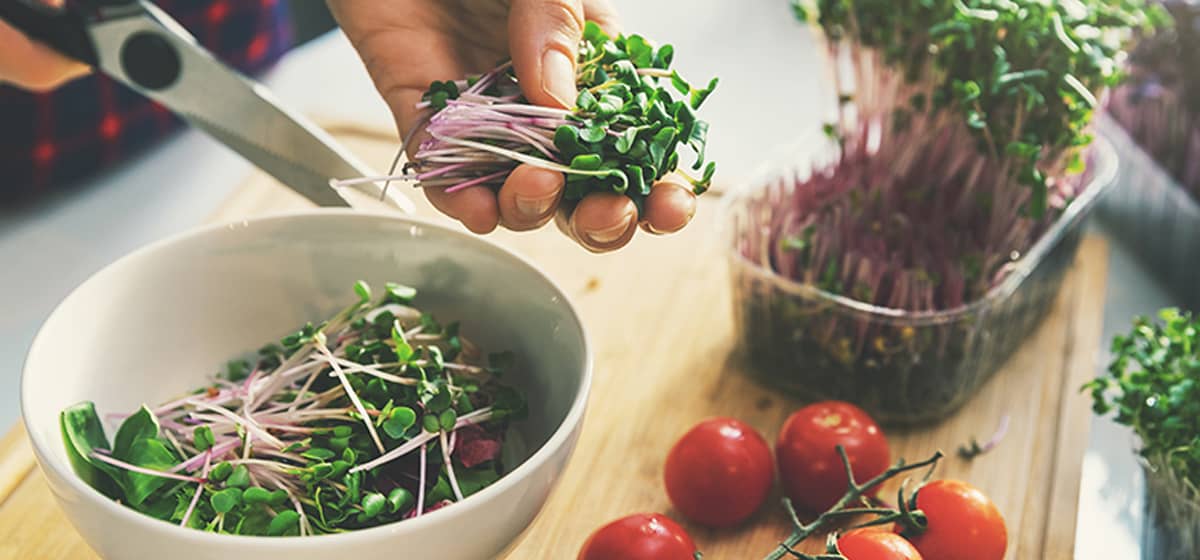
Plants are a great option to have in any home. Not only do they add a pop of greenery, which is proven to help us feel more relaxed, having plants indoor also helps to eliminate any harmful toxins in the air. According to a study by NASA, houseplants can remove up to 87% of air toxins in 24 hours, ensuring that the air we breathe remains constantly clean and refreshing!
However, if you’re looking for a niftier houseplant option for your home that is suitable for HDB-living, growing your own microgreens also serves as a great alternative! In addition to its aesthetic exterior, microgreens are fuss-free and very easy to grow, taking an average of 14 days to harvest. Best of all, these tender greens can be added into any of your meals for that extra veggie boost – a definite advantage over regular houseplants! While miniscule in size, microgreens are packed with a whole range of nutrients and antioxidants, and can play a role in protecting us against chronic diseases.
If you’re a first-time microgreen plant parent and are wondering how you can get started – fret not! In today’s blogpost, we will be sharing four microgreens that are perfect for anyone:
1. Lentils
While it is one of the lesser known and underrated microgreens, lentils are not any less beneficial for our health. In addition to nutrients such as vitamin B, C and E, lentil microgreens are also jam packed with protein, serving as a great meat replacement source. What’s more, its high fibre content helps in boosting metabolism, weight management and may even reduce the risk of developing cancer.
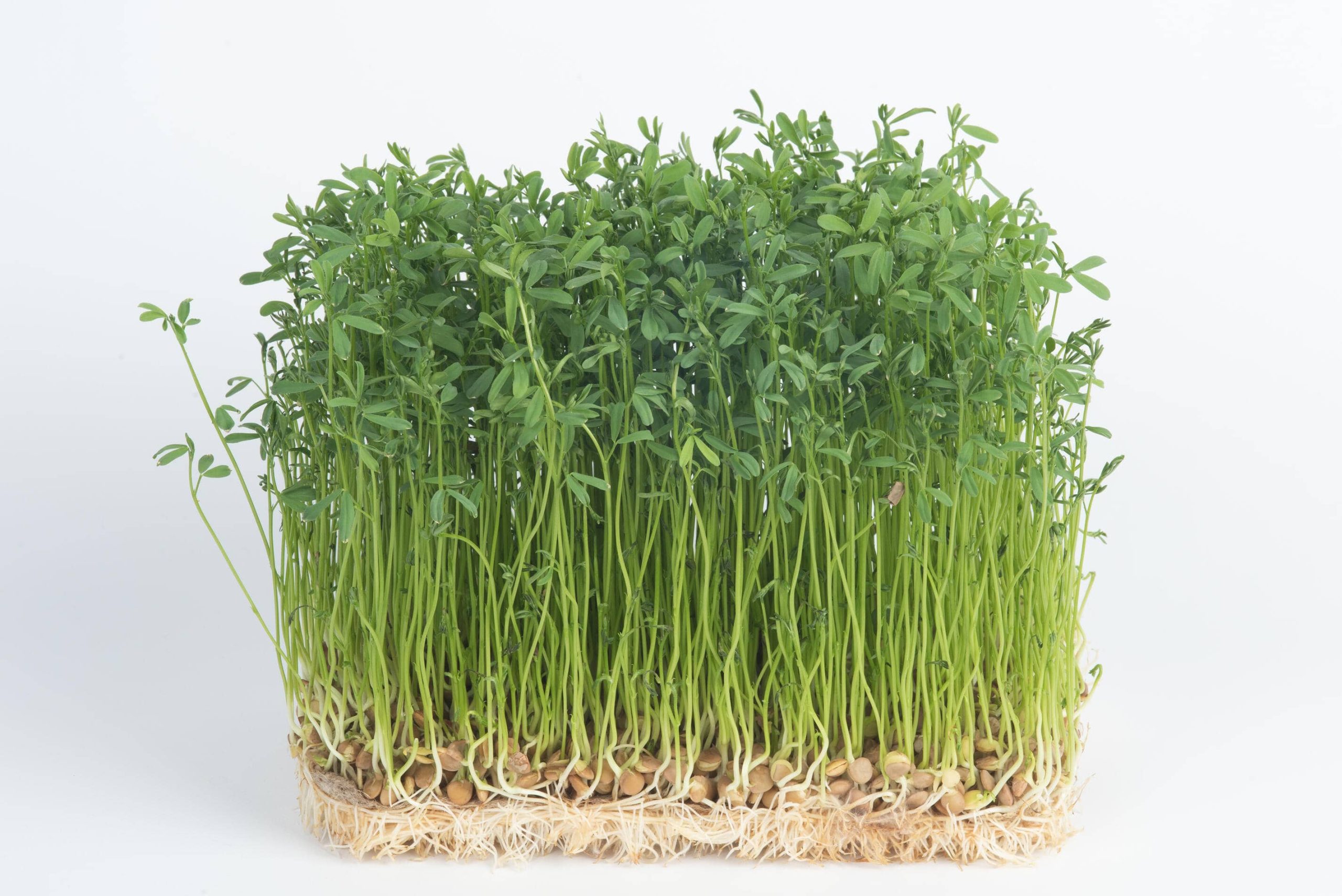
Image Credits: Nylon Coffee Roasters
With its crunchy and refreshing flavour, lentil microgreens are a perfect addition into any of your favourite meals from salads to stir-fry noodles or even blending them up and mixing it into your pesto sauce! If you’re feeling more adventurous, try including these little greens into your smoothies or curries for that kick of nutty flavour and boost of vitamins.
Gardening Tip: A great tip when growing lentil microgreens is to soak your seeds overnight for at least 8 to 12 hours to jumpstart the sprouting process. Once you notice sprouts shooting out of your lentil seeds, they are then ready to be transplanted into your growing medium such as soil. Thereafter, do ensure that your growing medium remains moist but not overly soaked, for the best condition for your microgreens to flourish.
While growing lentil microgreens is a little different from the others and would require an extra soaking step, the entire process remains pretty straightforward and is easy even if you’re a novice gardener, so not to worry!
2. Kale
Kale microgreens are known as one of the most nutrient-dense superfoods with multiple health benefits including vitamins A, C and B6, as well as a myriad of antioxidants. A true example of a food source that punches above its weight, kale microgreens contain 5.2 times and 5.3 times more potassium and zinc respectively as compared to its adult counterpart! With such high levels of minerals, these microgreens are a great way to help regulate our blood pressure, support the growth of healthy muscles and provide a boost to our immune system.
While it holds a subtler bitter flavour as compared to mature kale, kale microgreens are still considered as one of the stronger tasting microgreens. If you’re not a fan of its raw and grainy texture, we’d suggest adding them into a banana smoothie, which will cover the otherwise raw taste of the kale. Similarly, if you’re looking to include this superfood into your salads, adding a drizzle of balsamic vinegar will do the trick in masking its bitterness!
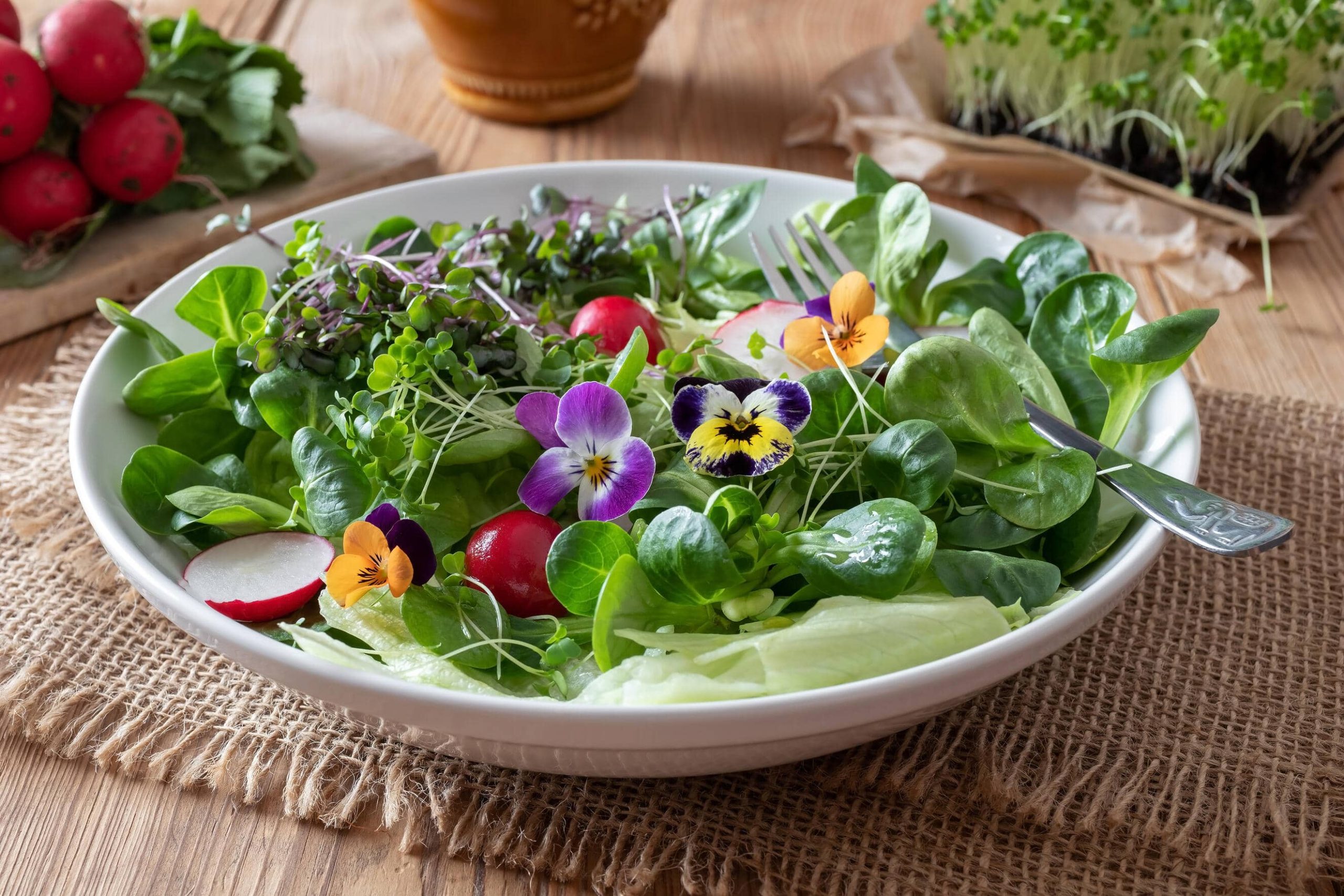
Source: The Sustainability Project
Gardening Tip: Kale microgreens are one of the easiest to grow – taking just 10 days before they’re ready for harvest! But, if you’re looking to further improve the germination process, a great tip would be to mist your seeds prior to spreading them on your soil.
Once they are ready for harvest, do remember to not water them 12 hours prior to harvest as well, as it would be very hard to get the foliage to dry otherwise. Packing your harvested kale microgreens wet is not encouraged as it would decrease its shelf life, which may lead to food wastage.
3. Broccoli
While a mature broccoli is sturdy and rather hard when its uncooked, a microgreen broccoli is the complete opposite! With its tiny leafy green tops, these delicate young seedlings of the broccoli plant are incredibly nutritious and contain double the amount of calcium per gram compared to regular broccoli. Broccoli microgreens are also high in sulforaphane, which is one of the critical micronutrients that helps fight cancer, reduce inflammation in our respiratory pathways and even heal any damage to our eyes’ retinal cells – ensuring that our eyesight remains sharp and bright!
With a tangy and mild peppery aroma, broccoli microgreens can be easily added to any of your favourite dishes like sandwiches or soups. To maximise its nutritional value, try consuming these microgreens raw, which studies have shown to provide three times more nutrients.
Or, if you’d prefer not too raw a taste, simply dunk them in your hot soup, which would still yield you at least 80% of its nutrient value. These miniature crunchy add-ons are also great for sneaking into your child’s meals for that extra nutrition boost and protect them against any viruses or free radicals.
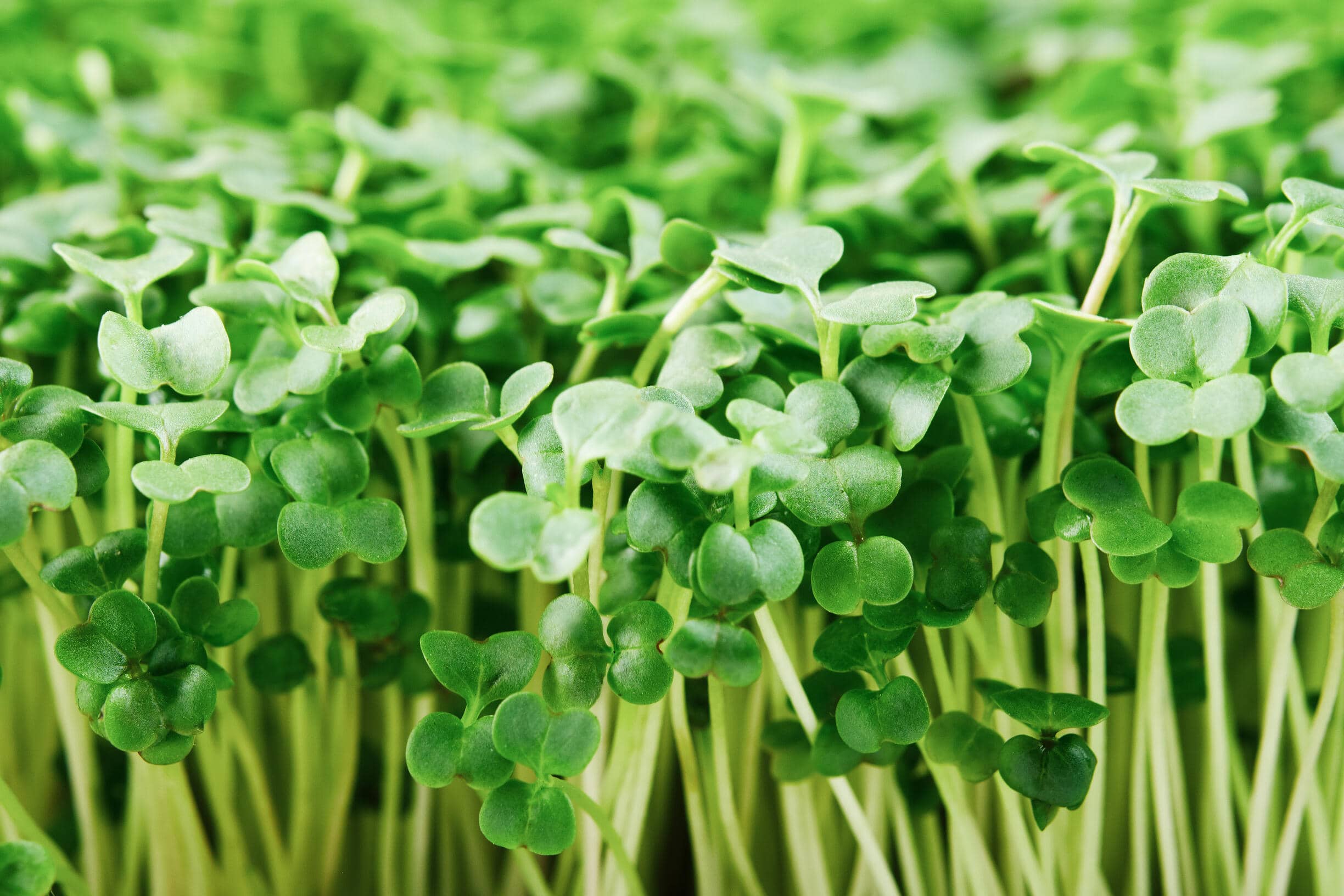
Image Credits: Back 2 Basic by JC Cheng
Gardening Tip: Broccoli microgreens are one of the more popular options given that they’re the simplest to grow – taking just 6 days before they’re ready for harvest! These microgreens require tons of light so we’d encourage you to leave your planting tray by the windowsill or invest in some grow lights. Keep your microgreens moist but not overly watered, and you will be ready to harvest them in no time!
4. Cauliflower
With its glossy dark green leaves and violet stem undertones, cauliflower microgreens are one of the most aesthetically pleasing bunch of the lot out there. Part of the Brassicaceae family, which also counts bok choy, brussels sprouts and cabbage within its family tree, broccoli microgreens pack a punch on the nutritional front with a high concentration of vitamins C, B6, iron, magnesium and fibre. This helps in reducing our risk of liver cancer and diabetes, heart disease and even improving our moods!
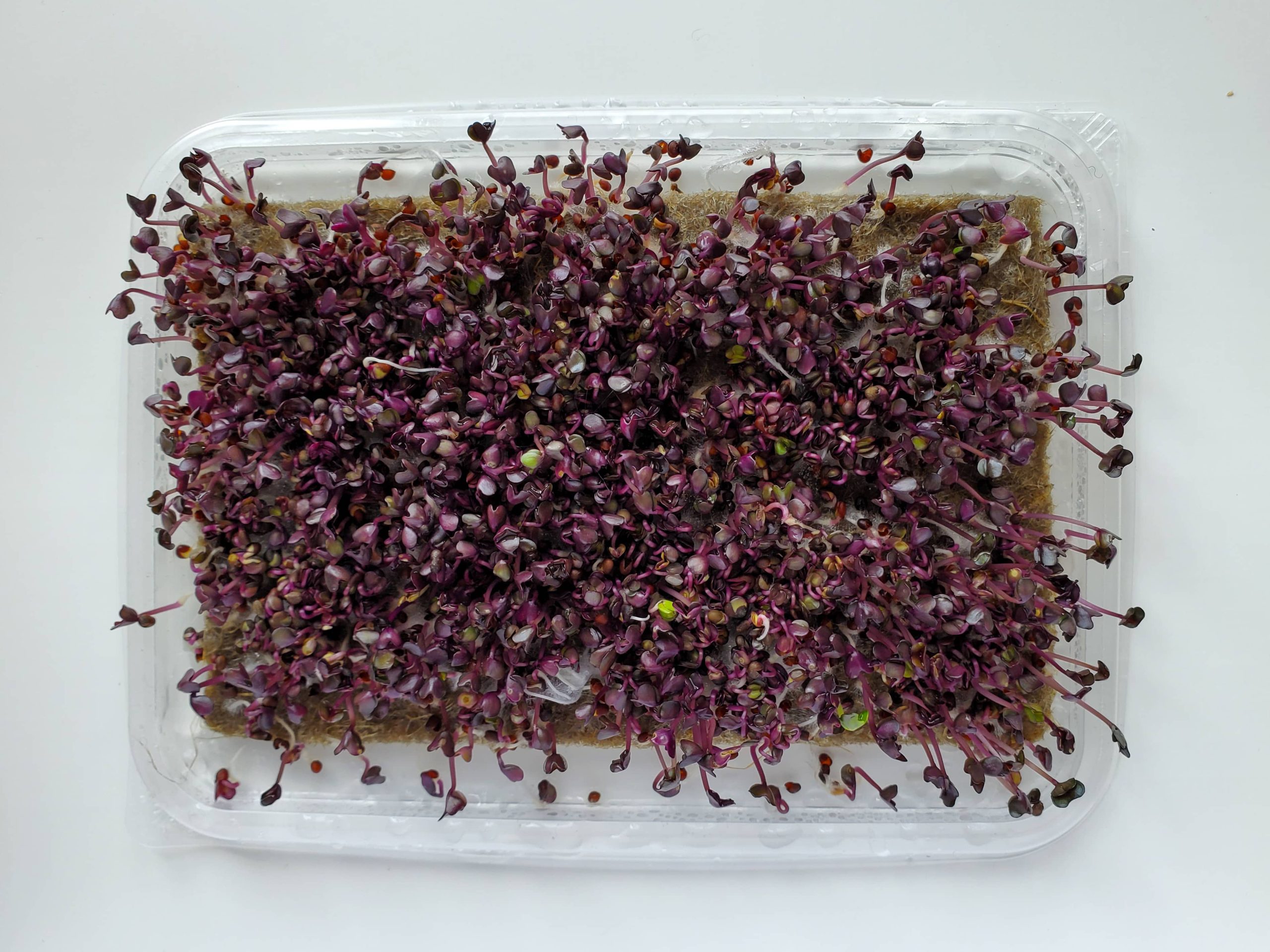
Similar to broccoli microgreens, these cauliflower babies also have a mild peppery flavour accompanied with a crisp texture. Simply throw them into any of your soups or as a topping for your sandwiches and burgers for that extra nutritional crunch. If you’re up for it, you can even consume it as a snack, dipping them in hummus!
Gardening Tip: There are two stages to growing cauliflower microgreens. First, for germination, place them in the dark for around five days. Thereafter, once the seeds have germinated, expose your microgreens to indirect light for another four days – this will help in flourishing the microgreens as they turn from yellow to beautiful green leaves. Ensure that you only water them twice a day – every morning and evening – and you will be able to harvest them within less than two weeks!
Ready to start growing your own little garden at home? Check out the various local brands such as EverythingGreen.sg and Urban Harvest that offer a myriad of options. If you’d like to pick up some quick tips on how best to take care of your microgreen babies, do head over to our ChangeMaker Cultivate Central where they offer some of the best tips to ensure that your microgreens will be ready for harvest in no time!
And, if you would like to extend your green thumb beyond your homes, you can also contribute by making a donation to Geneco’s X NParks’ Garden City Fund at Giving.sg.

Join us as we partake in NParks’ #OneMillionTrees movement to #PowerTheChange as we look towards planting an additional 150 trees in marking our 4th Anniversary and milestone of powering over 150,000 homes this year!
We will be matching dollar-for-dollar with 100% of the money raised to go towards this movement.
Together, let’s continue to #PowerTheChange and create a greener world for all who live in it.
